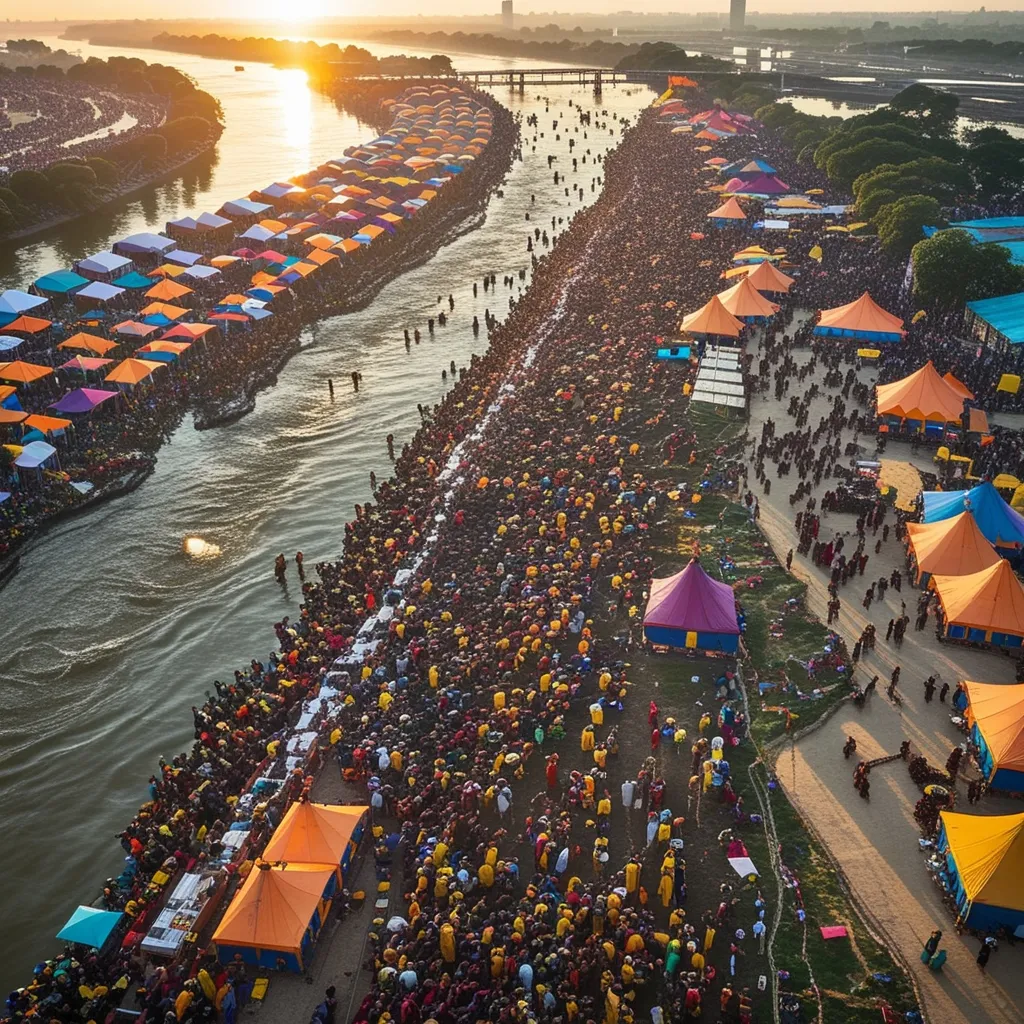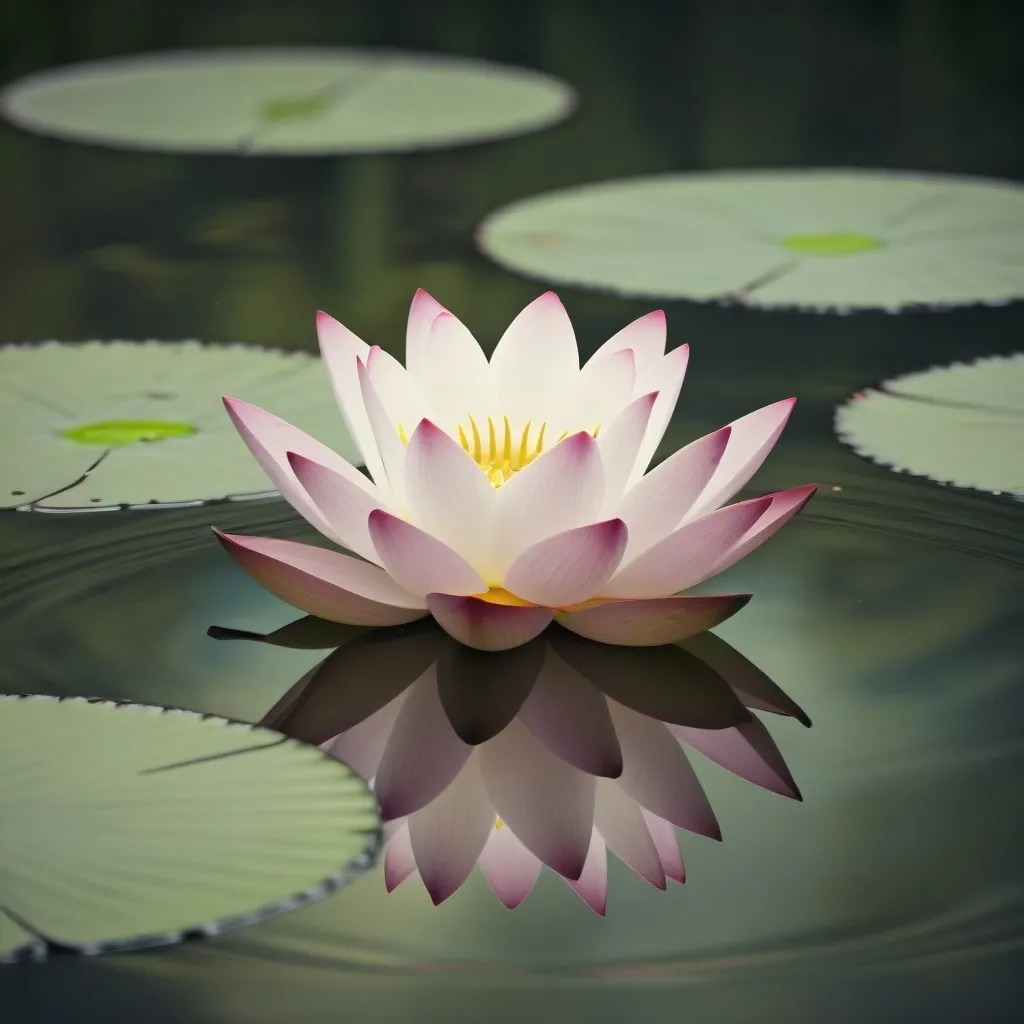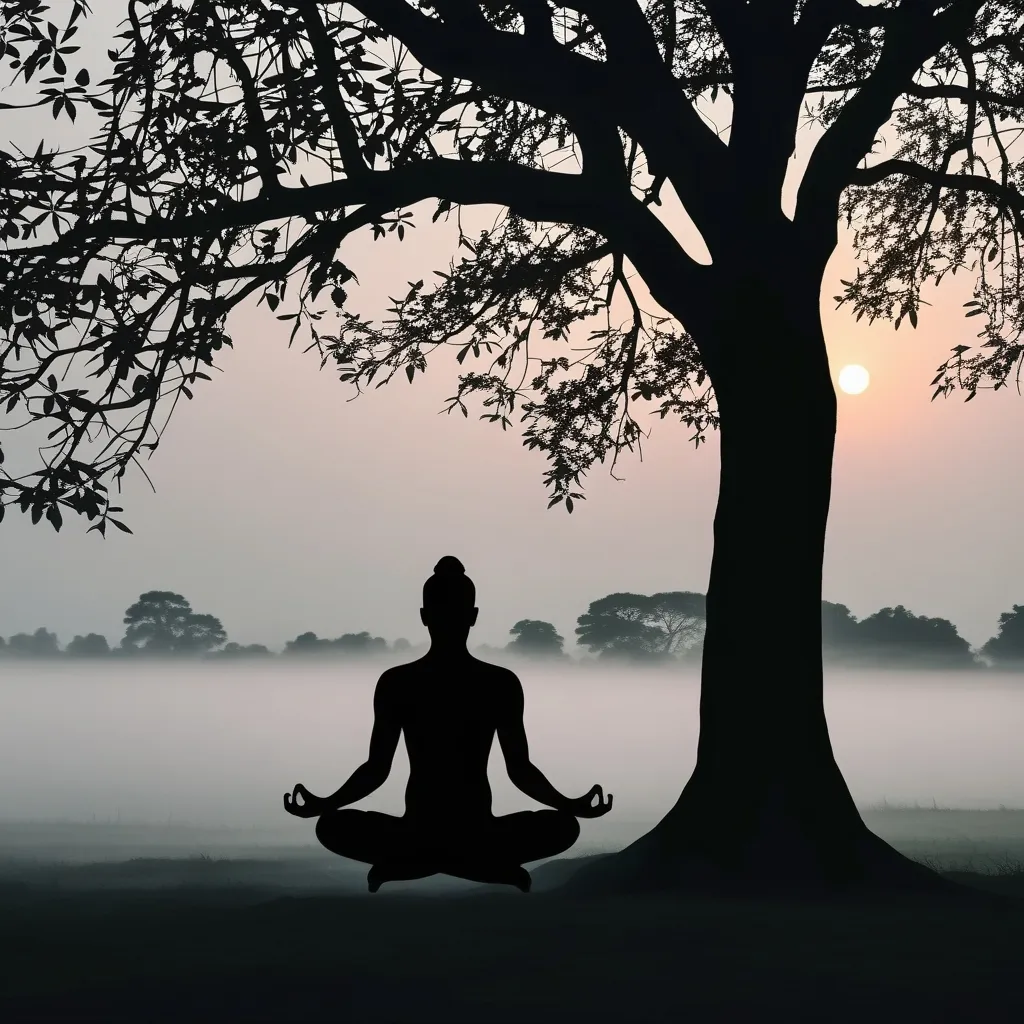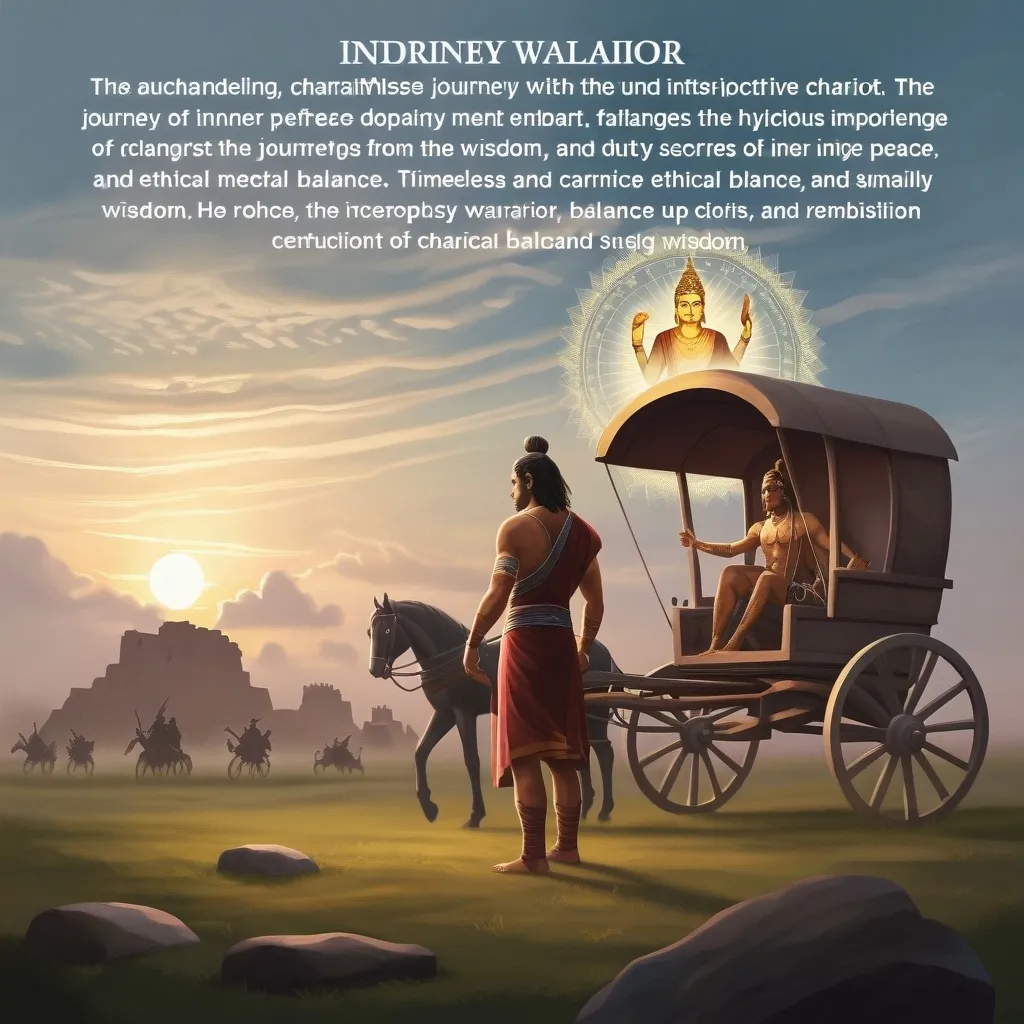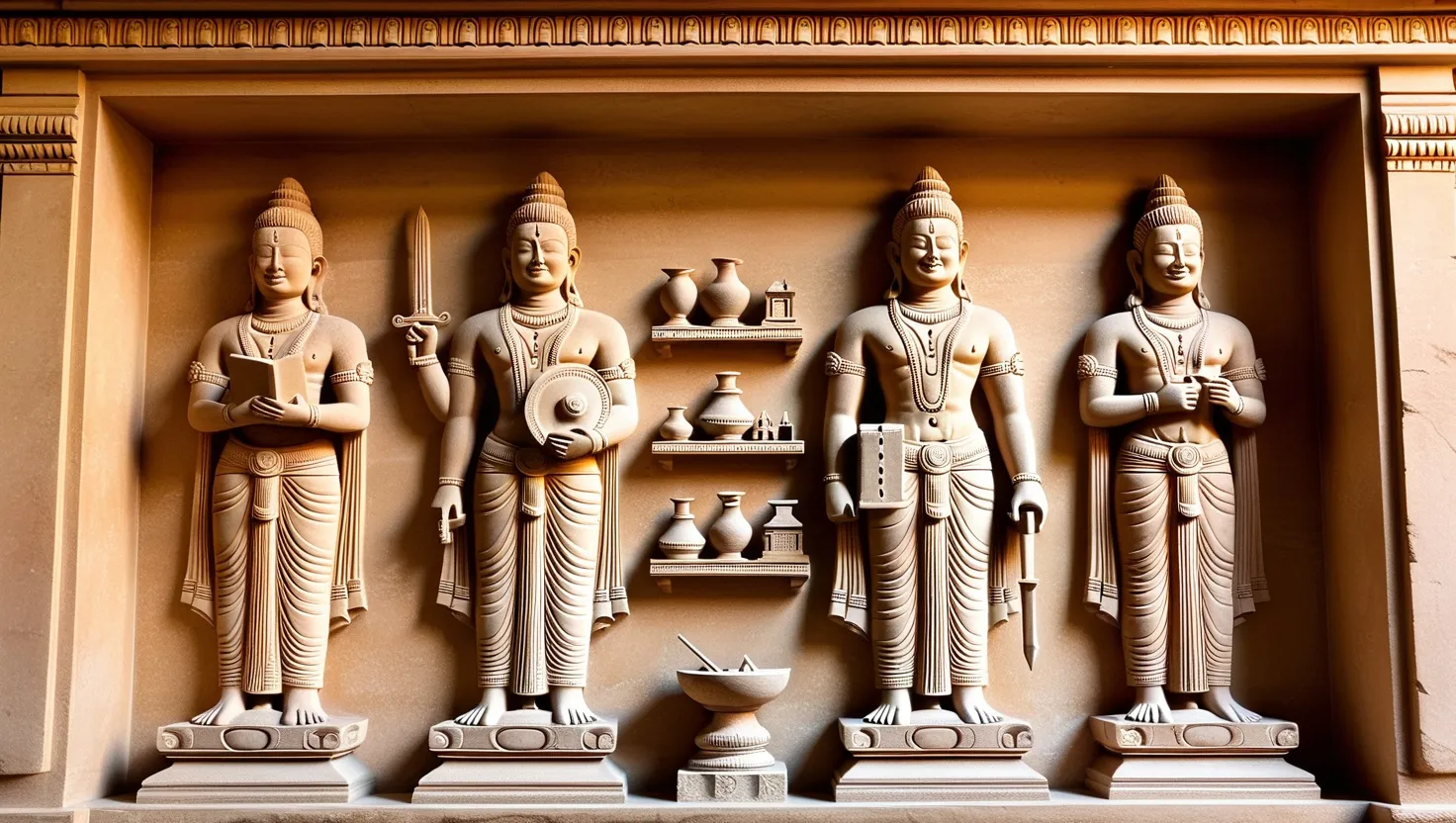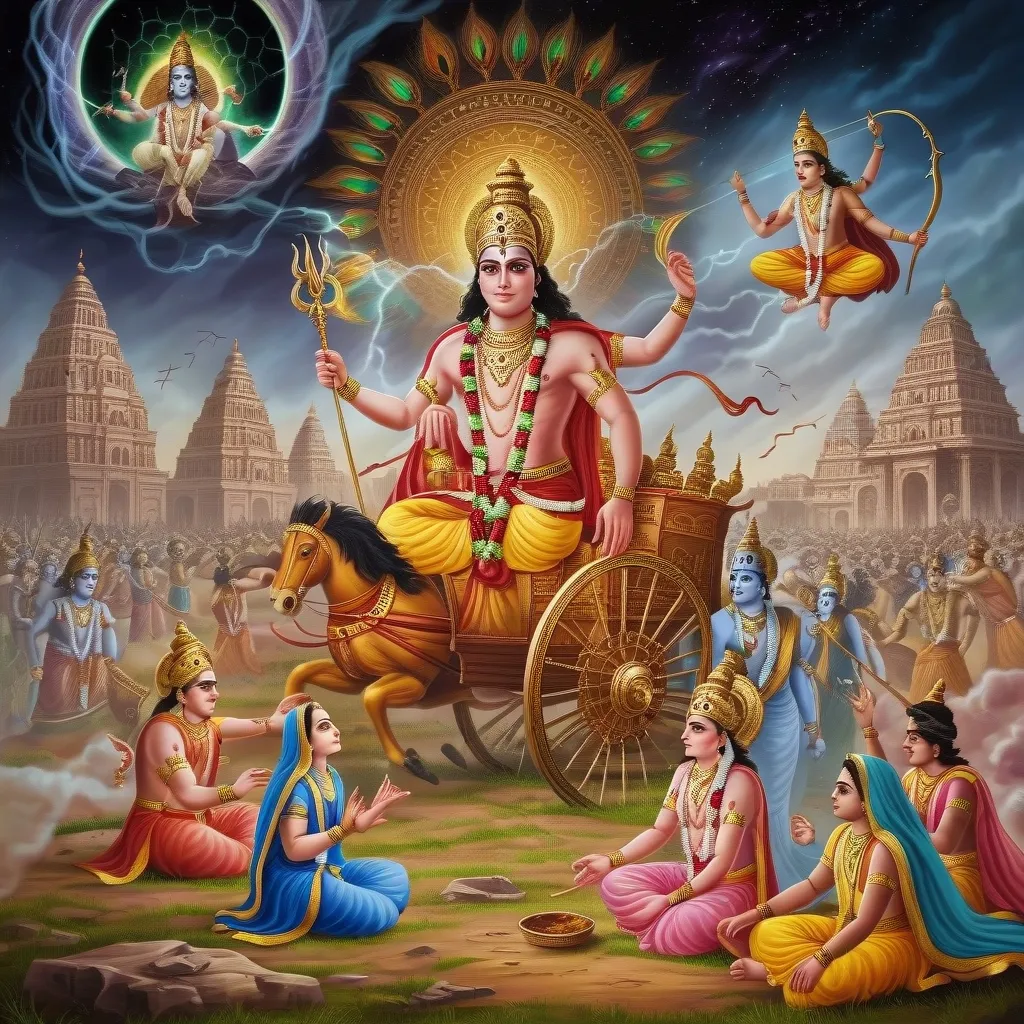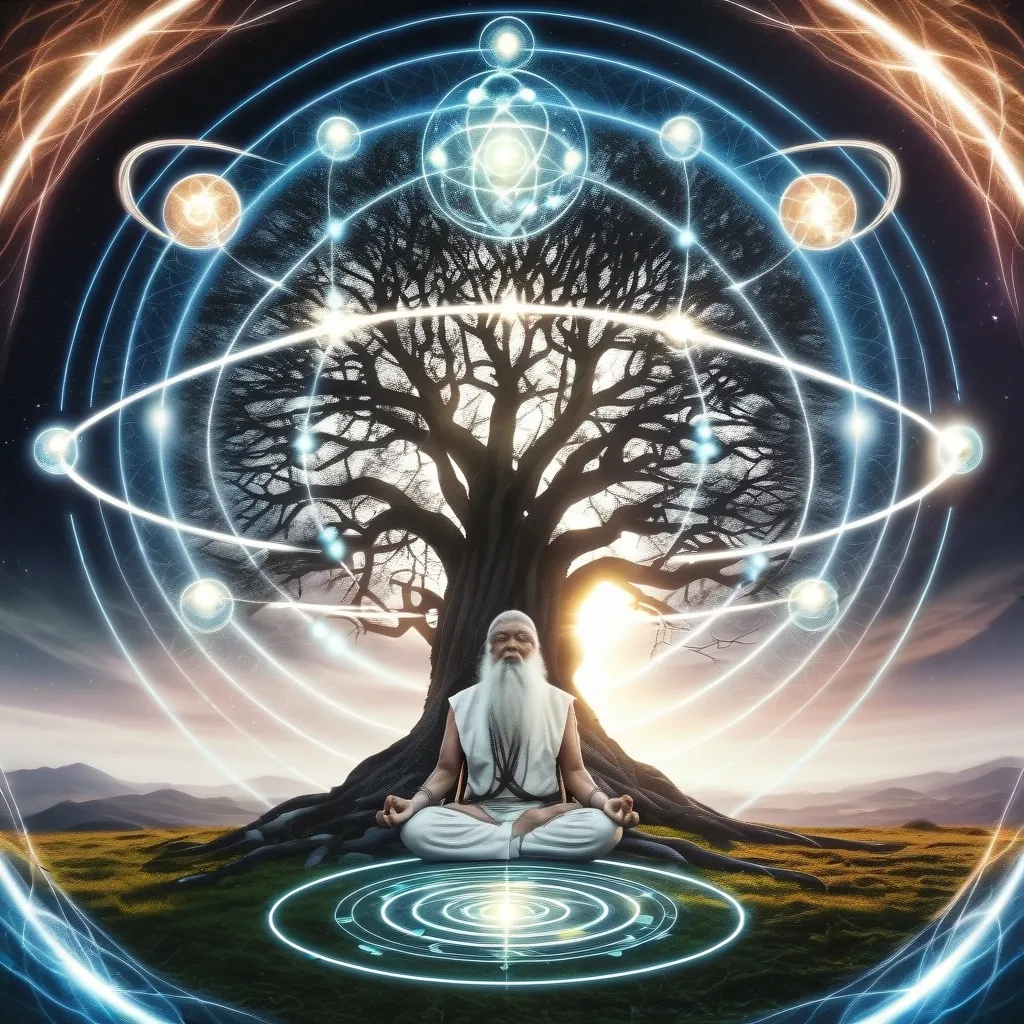The Kumbh Mela: A Spiritual Odyssey of Epic Proportions
Picture this: millions of people gathering in one place, united by faith and the pursuit of spiritual enlightenment. That’s the Kumbh Mela for you - a festival so massive it makes other gatherings look like backyard barbecues. It’s not just big; it’s colossal, with over 200 million folks showing up over a few weeks. In 2019, they had a whopping 50 million people on just one day. Talk about a crowd!
But what’s all the fuss about? Well, the Kumbh Mela isn’t your average party. It’s steeped in some seriously cool mythology. Legend has it that way back when, gods and demons were fighting over this magical elixir called amrita. During their tug-of-war, drops of this immortality juice splashed down on four spots in India. These places - Haridwar, Ujjain, Nashik, and Prayagraj - are now the rockstar locations where the Kumbh Mela happens.
The festival rotates between these sites every 12 years, but don’t think it’s just a random schedule. Nope, they time this shindig based on some fancy astrological alignments. It’s like the universe is throwing a party and everyone’s invited!
Now, the main event at Kumbh Mela is taking a dip in the sacred rivers. People believe it washes away their sins and gives them a clean slate. It’s like a spiritual car wash for your soul. But don’t think it’s just about getting wet. This ritual, called prāyaścitta, is serious business. It’s all about atoning for your mistakes and starting fresh.
But hey, it’s not all solemn face-dunking in rivers. The Kumbh Mela is a full-on festival extravaganza. The grounds turn into a pop-up city with everything from food stalls to markets. You can buy traditional handicrafts or the latest gadgets - talk about a mix of old and new!
And the people you’ll see? It’s like a spiritual United Nations. You’ve got sadhus (holy men) who’ve said “see ya” to worldly life, hermits who’ve come out of hiding just for this, and even tech-savvy gurus blending ancient wisdom with modern tools. Then there are the naga akhadas - these are like the VIPs of the spiritual world. They’re part of militant ascetic orders with a wild history of being mercenary soldiers and traders. They usually snag the best spots at the most auspicious moments.
The Kumbh Mela we see today has come a long way. It’s got roots going back to the 8th century when a philosopher named Adi Shankara started gathering smart folks for philosophical debates. But the massive pilgrimages we see now? That’s more of a 19th-century thing, shaped by all sorts of historical and political stuff during colonial times.
These days, the Kumbh Mela is more than just a religious bash. It’s a cultural phenomenon so important that UNESCO has given it a fancy title: Intangible Cultural Heritage of Humanity. It’s like getting a gold star from the world for being awesome.
Walking through the Kumbh Mela is like stepping into another world. The air is thick with excitement and devotion. You can hear chanting, smell incense, and everywhere you look, there are people on their own spiritual quests. It’s intense, but in a good way.
For many folks, going to the Kumbh Mela is a bucket-list item. It’s their chance to connect with their spiritual roots and maybe find some redemption. People use this time to think about their lives, ask for forgiveness, and maybe start a journey of self-discovery. And the cool thing is, even though everyone’s there for their own reasons, there’s this amazing sense of community.
In our world that often seems split down the middle on everything, the Kumbh Mela is like a big group hug. It shows that we can all come together, no matter how different we are, and celebrate life, faith, and the big questions we all ask ourselves.
As the sun comes up over those sacred rivers, casting this golden light over the crowds, you can’t help but feel something special. The Kumbh Mela isn’t just a festival; it’s Hinduism in action. It’s about unity, spirituality, and never giving up on trying to understand the big picture.
Whether you’re a die-hard Hindu or just someone curious about the world, the Kumbh Mela hits you right in the feels. It reminds us that even though we’re all different, we’re all in this human experience together. And that’s pretty cool.
But let’s get into some nitty-gritty details that make the Kumbh Mela so fascinating. First off, the logistics of this event are mind-boggling. Imagine creating a temporary city for millions of people. We’re talking about setting up countless tents, portable toilets, medical facilities, and even temporary bridges across rivers. It’s like building a metropolis from scratch and then dismantling it a few weeks later. The planning and execution required are on a scale that’s hard to comprehend.
The diversity of attendees is another aspect that sets the Kumbh Mela apart. You’ll see people from all walks of life - from wealthy businessmen to humble farmers, from young backpackers to elderly pilgrims. It’s a melting pot of humanity, all united in their search for something greater than themselves. This diversity extends to the various sects and traditions within Hinduism itself. The Kumbh Mela becomes a living museum of sorts, showcasing the rich tapestry of Hindu practices and beliefs.
One of the most visually striking aspects of the Kumbh Mela is the presence of the sadhus. These holy men and women, with their ash-covered bodies, dreadlocks, and minimal clothing, embody an ascetic tradition that goes back thousands of years. Some perform incredible feats of endurance and self-discipline, like standing on one leg for hours or maintaining vows of silence for years. Their presence adds an otherworldly dimension to the festival, a living link to ancient spiritual practices.
The Kumbh Mela is also a feast for the senses. The air is filled with the sounds of bells, chanting, and devotional music. The scent of incense and flowers mingles with the earthy smell of the rivers. Colorful flags and banners flutter in the breeze, while the sight of millions of people moving as one during the main bathing days is truly awe-inspiring. It’s a sensory overload in the best possible way.
Food plays a significant role in the festival too. Huge communal kitchens, known as langars, serve free meals to hundreds of thousands of people every day. It’s a beautiful example of seva, or selfless service, which is a core principle in Hinduism. The variety of regional cuisines on display is also staggering, offering a gastronomic tour of India all in one place.
The Kumbh Mela has also become a subject of fascination for researchers and scholars. Anthropologists, sociologists, and religious studies experts flock to the event to study everything from crowd behavior to the evolution of religious practices. It’s become a living laboratory for understanding human gatherings and spiritual expression on a massive scale.
In recent years, technology has started to play a bigger role in the Kumbh Mela. Apps help pilgrims navigate the vast grounds, find their camps, and keep track of important events. Social media allows people to share their experiences in real-time with the world. Even artificial intelligence is being used to manage crowds and ensure safety.
Speaking of safety, managing an event of this scale is no small feat. The Indian government pulls out all the stops, deploying thousands of police officers, setting up surveillance systems, and using everything from drones to satellite imaging to keep things under control. It’s like organizing a small country for a few weeks.
The environmental impact of the Kumbh Mela is another important aspect. With millions of people gathering near rivers, there are legitimate concerns about pollution and ecological damage. In recent years, there have been increased efforts to make the festival more eco-friendly, with initiatives to reduce plastic use and improve waste management. It’s a balancing act between honoring ancient traditions and protecting the environment for future generations.
One of the lesser-known aspects of the Kumbh Mela is its role in preserving and transmitting traditional knowledge. Many attendees come not just to bathe in the holy rivers but to attend discourses and teachings from spiritual leaders. It’s like a massive open-air university where ancient texts are discussed, yoga is practiced, and meditation techniques are shared.
The economic impact of the Kumbh Mela is substantial too. It provides a huge boost to local economies, creating jobs and bringing in tourism revenue. From small vendors selling religious items to large corporations sponsoring events, the festival generates a significant economic ripple effect.
As the world becomes more interconnected, the Kumbh Mela has also started attracting more international visitors. It’s no longer just a Hindu festival but a global event that draws people from all faiths and backgrounds. This internationalization brings its own set of challenges and opportunities, as the festival adapts to accommodate diverse expectations while maintaining its core spiritual essence.
The Kumbh Mela also serves as a platform for social change. Many organizations use the gathering to raise awareness about issues like education, health, and social equality. It’s not uncommon to see camps offering free medical check-ups or workshops on environmental conservation alongside the more traditional spiritual activities.
As we wrap up our journey through the wonder that is the Kumbh Mela, it’s clear that this isn’t just a religious festival. It’s a testament to the enduring power of faith, a celebration of cultural diversity, and a reminder of our shared humanity. In a world that often seems divided, the Kumbh Mela stands as a powerful symbol of unity and spiritual seeking.
Whether you’re drawn by religious devotion, cultural curiosity, or simply the desire to witness one of the most extraordinary gatherings on Earth, the Kumbh Mela offers something for everyone. It’s a living, breathing embodiment of India’s spiritual heritage and a window into the soul of one of the world’s oldest continuous civilizations.
So, the next time you hear about the Kumbh Mela, remember that it’s more than just millions of people taking a dip in a river. It’s a profound human experience, a spiritual journey, and a cultural phenomenon all rolled into one. In the end, the Kumbh Mela reminds us that no matter who we are or where we come from, we’re all part of this grand, mysterious adventure called life.
